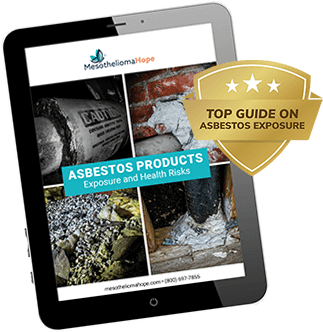Asbestos in Caulking Explained
Caulk products were designed to be weatherproof, heatproof, waterproof, and durable, which is why asbestos in caulking was added to reinforce the formula.
Asbestos in caulking was most commonly used in ‘window putty,’ to help retain heat and reduce drafts.
Common places in the home that may have asbestos-containing caulk are around the seals of ovens, fireplaces, boilers, pipe joints, ducts, brickwork, and exteriors.
Asbestos fibers cannot be released from caulking unless the caulk is damaged by aging, water, impact, drilling, sanding, scraping, or attempts to remove it.
Caulking is particularly dangerous when houses are undergoing renovations or demolitions, as the asbestos becomes disturbed and can circulate throughout the air.
In construction, caulking was used to close gaps between pipes or panels, which means that workers today, such as plumbers and electricians, can be exposed to the fibers when repairing or maintaining these areas.
Asbestos in Caulking Products Today
In 1993, the U.S. Environmental Protection Agency (EPA) stated that window putty containing asbestos was not required to be removed from a building before demolition, but that the caulking will become regulated and removed if it becomes brittle.
Once caulking breaks down and becomes friable, the asbestos particles are dangerous. At this point, the EPA recommends seeking professional advice on how to remove the caulking and replace it with an asbestos-free alternative.
Being around asbestos fibers can be detrimental to health as the microscopic particles are easily inhaled. Once they reach the lining of the lungs, the heart, or the abdomen they can become attached and cause mesothelioma tumors.
Who Was Exposed to Asbestos Caulking?
Asbestos was commonly used in window glazing and caulking to seal windows and glass panels. While it’s no longer used today, many pre-1980s buildings may contain windows with this substance.
Over time caulking hardens. When it cracks, tiny particles of asbestos become airborne. If this happens in a residential property, anyone in the area could be at risk of inhaling fibers and developing mesothelioma.
Fibers can attach to clothing, shoes, and hair and place others at risk of secondary exposure.
Those who worked in caulking manufacturing would have been highly exposed to the substance, though at this stage the caulking mixture would have been wet and pliable in texture.
As asbestos is more dangerous when dry and cracked, workers may not have been as severely exposed as one may think.
Nowadays, removing caulking can be even more dangerous than installing it, meaning that construction and maintenance workers may be at higher risk of developing mesothelioma if they do not wear the correct safety equipment.
Health Risks of Asbestos in Caulking
Asbestos is carcinogenic. When inhaled, the tiny fibers can become lodged in the soft tissues of the body. Over time, these fibers produce cause extensive irritation and inflammation, ultimately triggering cell mutations.
Healthy cells that mutate become mesothelioma cells, spreading out of control and forming cancerous tumors.
Exposure to asbestos in caulking can lead to other diseases including pleural plaques, asbestosis, and lung cancer.
Asbestos in patching compounds was banned by the U.S. Consumer Protection Safety Commission in 1977, though products made before this point remain today.
Many old buildings are known to contain asbestos, and it’s during the repair or demolition of these buildings that people can come into contact with friable asbestos and risk developing mesothelioma.
Seeking Justice for Asbestos Exposure
The OSHA has confirmed that many contractors exposed workers to asbestos in the past through window renovations. Asbestos-based products like caulking and other products are strongly linked to mesothelioma and other related diseases.
Workers who have been diagnosed with mesothelioma and worked around asbestos-containing materials like caulking may be eligible for legal compensation.



